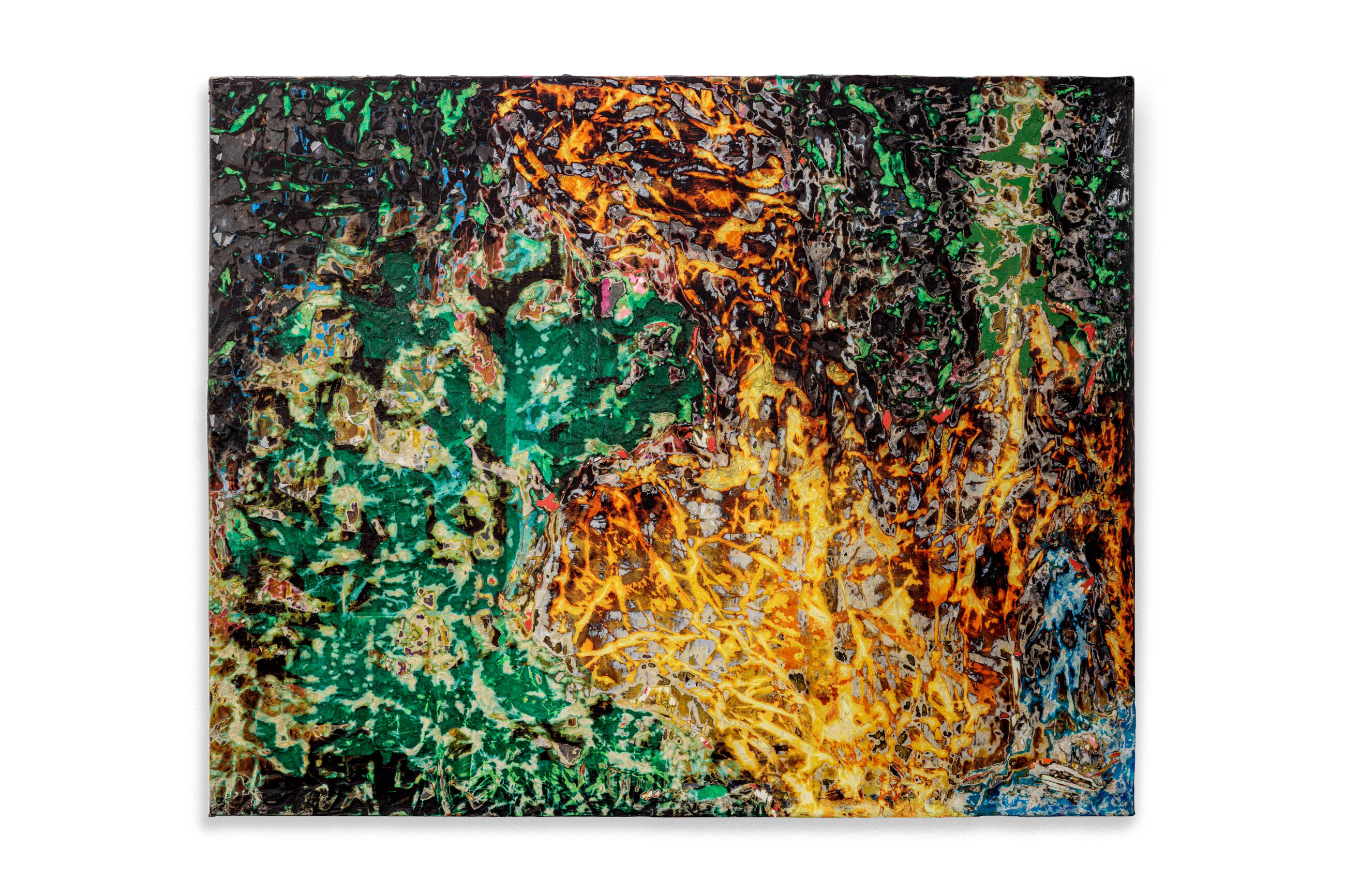Mark Bradford
conflagration
conflagration
Price available upon request
2022
Mixed media on canvas
121.9 x 152.4 x 5.4 cm / 48 x 60 x 2 ⅛ in
‘I may be pointing to the world being on fire but I’m also pointing to, okay, after the world is burned up, in the embers, this is what we need to do.’—Mark Bradford [1]
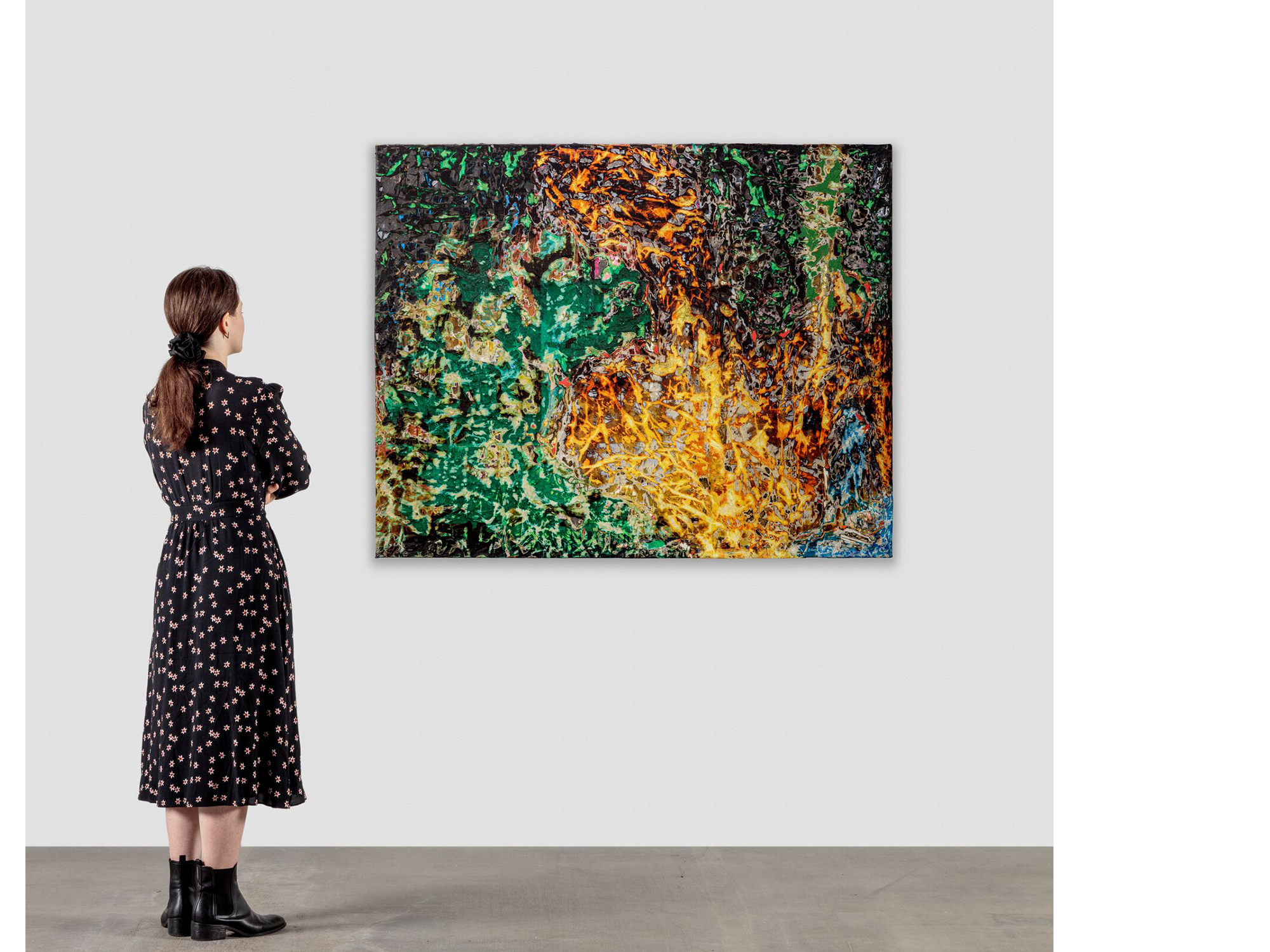
Born in Los Angeles where he continues to live and work, Mark Bradford creates abstract paintings that explore the forces that limit, restrict, and define communities of people. In ‘conflagration’ (2022), a force of orange flames scorch through the surrounding, lush green, pointing to the wildfires that ravage Southern California. Here, text, identifiable source material, and topographical markers of Los Angeles dissolve as Bradford works towards abstraction – allowing the form and composition to rise as he further develops a visual language rooted in a visceral approach to materials.
Slices between the bright, variegated strips and stains of orange and yellow reveal a subtle grid, which serves as the backbone to Bradford’s abstraction. The burning colors give rise to ashy grays which spread to the dark corners of the canvas. Shades of green and blue allude to nature in a new way, prompting the viewer to question where they are positioned in these liminal intervals. Are we entrenched in the terrestrial chaos or allowed simply to view the fiery abstraction absent of hierarchy and order?

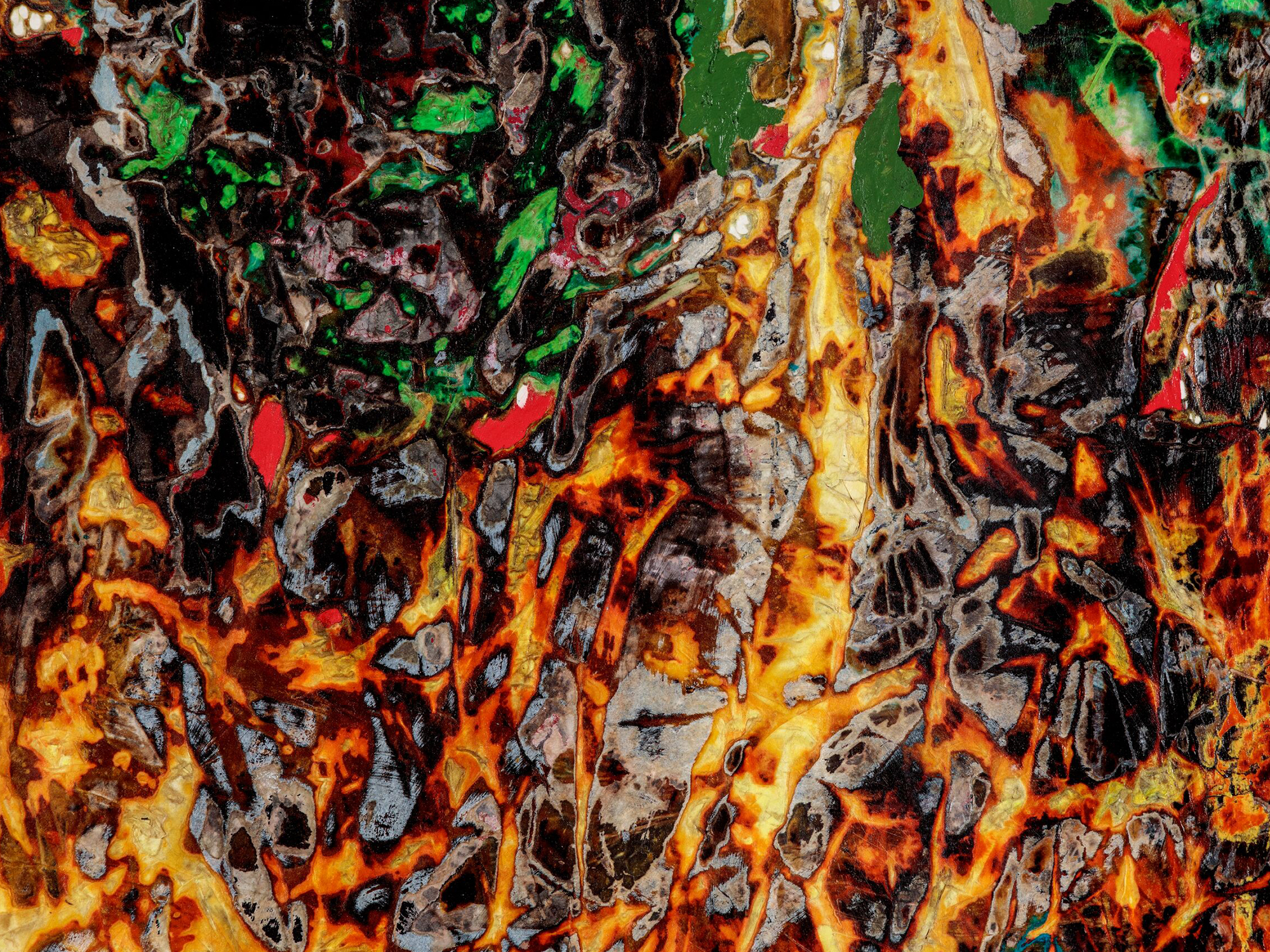
Bradford’s practice diverges from the traditional visual and material language of painting, bridging the gap between abstraction and the lived world – construction paper and power tools replacing oil, acrylic, and paintbrushes. Intricate layers of material, accumulated on the surface of the canvas before being processed through Bradford’s signature techniques, create stains, remnants, and wrinkles that result in striking textural patterns. The material and formal complexity calls for repeated and close looking, mirroring the intricacy of Bradford’s own insightful observations about his environment.
The additive and subtractive processes in Bradford’s work are developed from the physical limitations and parameters of his materials of choice. By layering and then excavating the surfaces through deconstructive physical gestures, he parallels the degradation of our environment, and in turn, the natural phenomena caused by climate change. Bradford’s formative techniques are vested with these deliberate parameters, and when he moves away from charged carriers of content gleaned from his neighborhood, form, process, and material leaven the work with meaning and history. In the words of curator Clara M. Kim, ‘To read Bradford’s work is to visualize and make evident these material and immaterial forces, the vying interests and influences, and the physical and psychological dynamics that indelibly mark out histories and everyday realities. While capturing the specificity of time and site, his works also gloriously surpass and transcend it. The power of Bradford’s art lies here, in the transformation of the ordinary, including the private spaces of memory and identity, into the extraordinary, and of the hidden, marginal, or transitory into the monumental.’ [2]
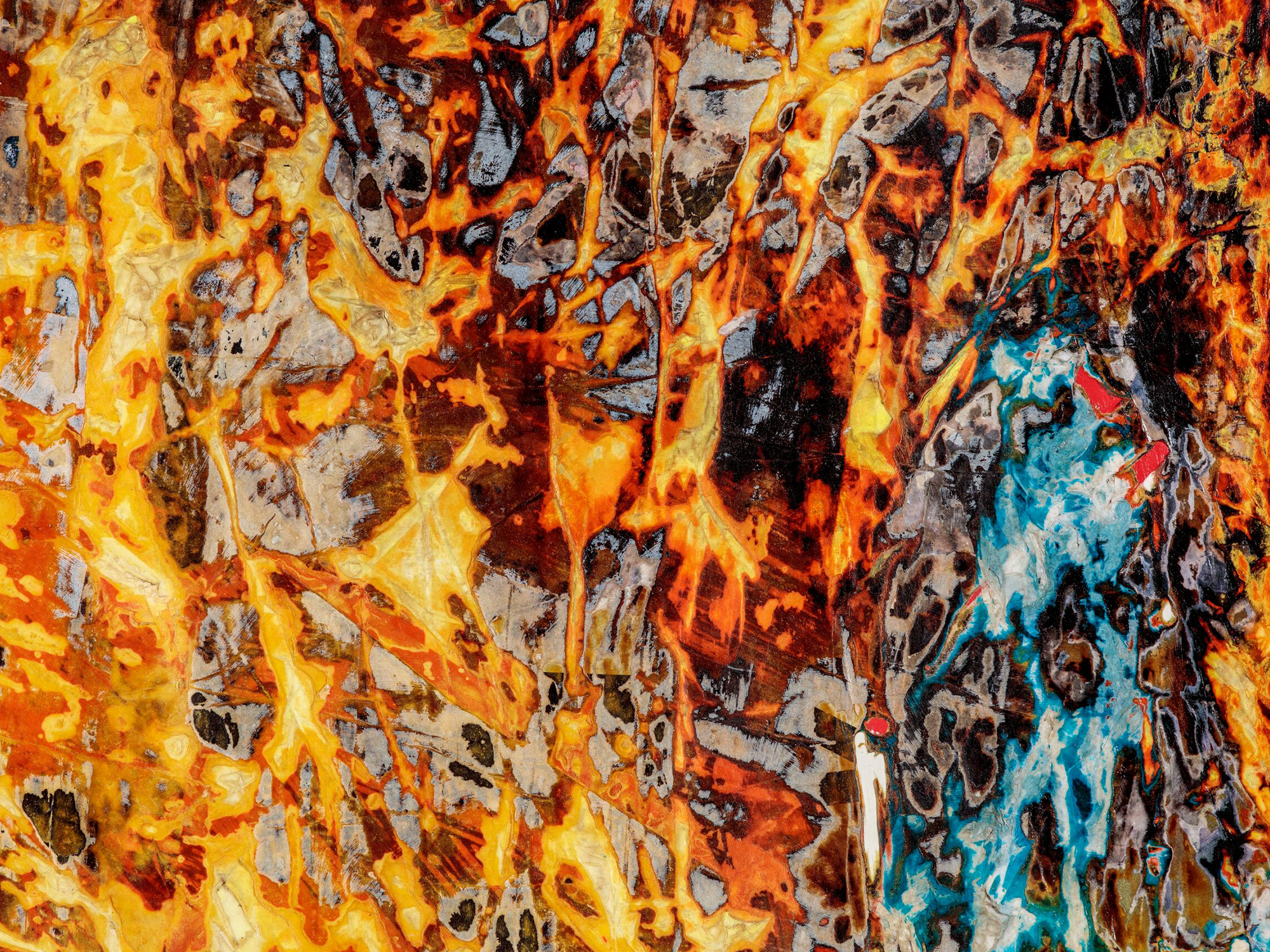
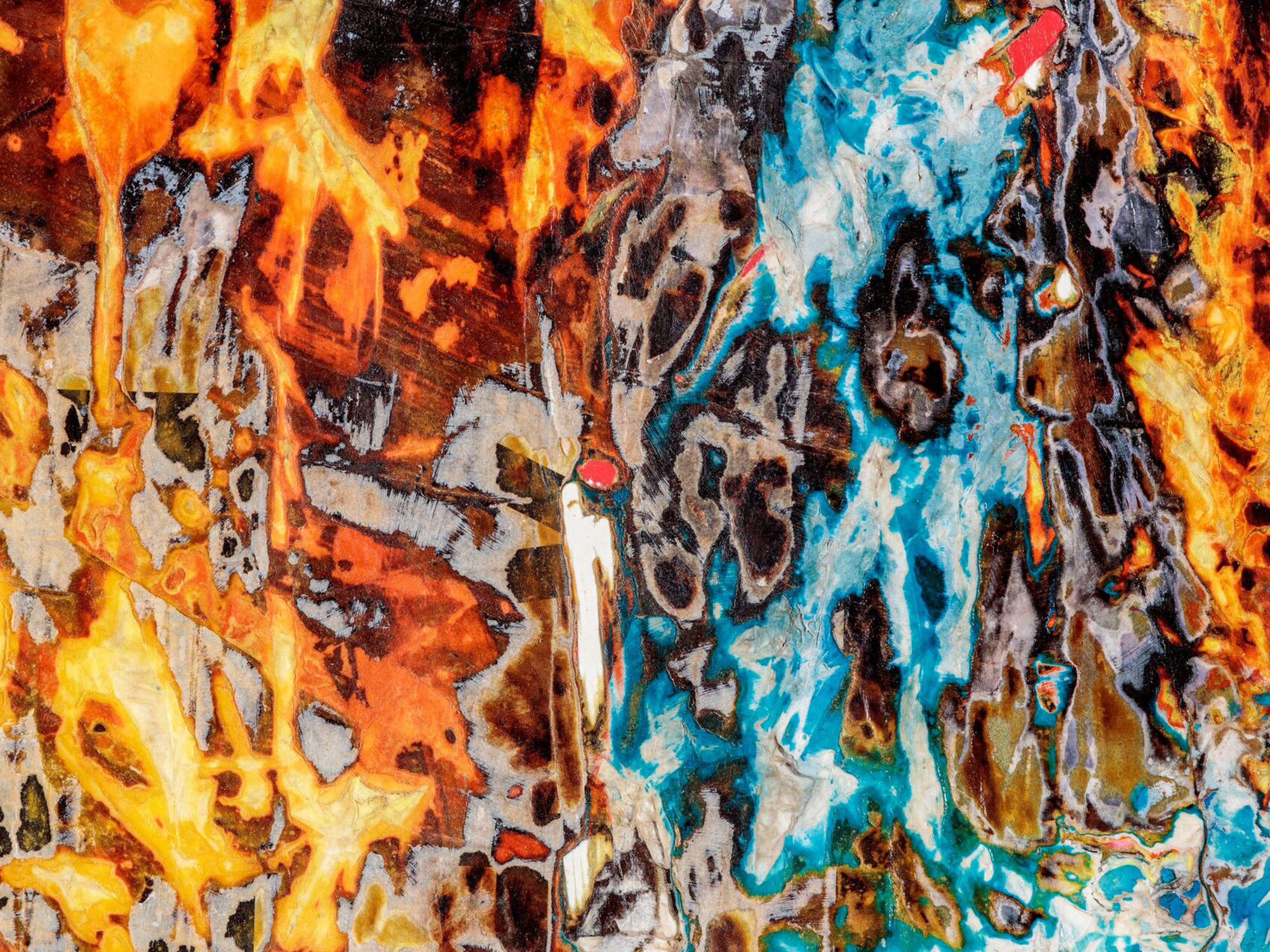
Bradford’s ability to bring form to his work is a genre of alchemy; the painting undergoes a transformation as if subject to the searing intensity of a chemical reaction or a process of oxidation. Bradford’s developed understanding of working with his hands, orchestrating unruly, raw materials belies tradition, the artist stating, ‘This palette belongs to the world, not to art.’ [3]
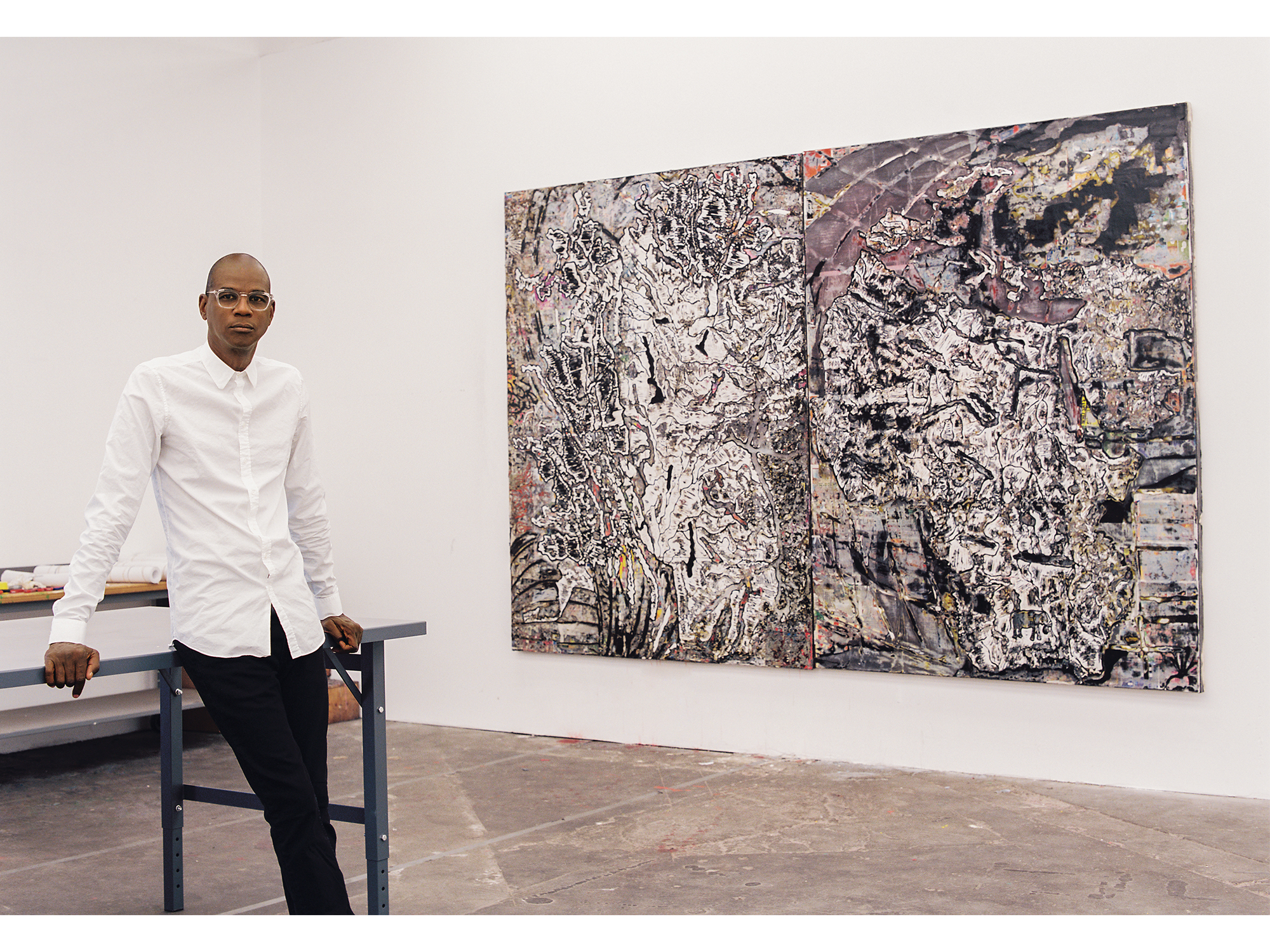
About the artist
 Mark Bradford (b. 1961 in Los Angeles; lives and works in Los Angeles) is a contemporary artist best known for his large-scale abstract paintings created out of paper. Characterized by its layered formal, material, and conceptual complexity, Bradford’s work explores social and political structures that objectify marginalized communities and the bodies of vulnerable populations. Just as essential to Bradford’s work is a social engagement practice through which he reframes objectifying societal structures by bringing contemporary art and ideas into communities with limited access to museums and cultural institutions.
Mark Bradford (b. 1961 in Los Angeles; lives and works in Los Angeles) is a contemporary artist best known for his large-scale abstract paintings created out of paper. Characterized by its layered formal, material, and conceptual complexity, Bradford’s work explores social and political structures that objectify marginalized communities and the bodies of vulnerable populations. Just as essential to Bradford’s work is a social engagement practice through which he reframes objectifying societal structures by bringing contemporary art and ideas into communities with limited access to museums and cultural institutions.
Portrait of Mark Bradford. Photo: Brandon Hicks
All artwork images © Mark Bradford. Photo: Joshua White
1.) Mark Bradford quoted in conversation with Christopher Bedford, ‘Like a Loose Shawl’ Tomorrow is Another Day, 2017, p. 125.
2.) Clara M Kim, “Mark Bradford’s Abstraction of Place,” Tears of a Tree, 2015, p. 65.
3.) Mark Bradford quoted in Katy Siegel, ‘Biography of a Painting’, Mark Bradford: Tomorrow is Another Day, 2017, p. 59.



